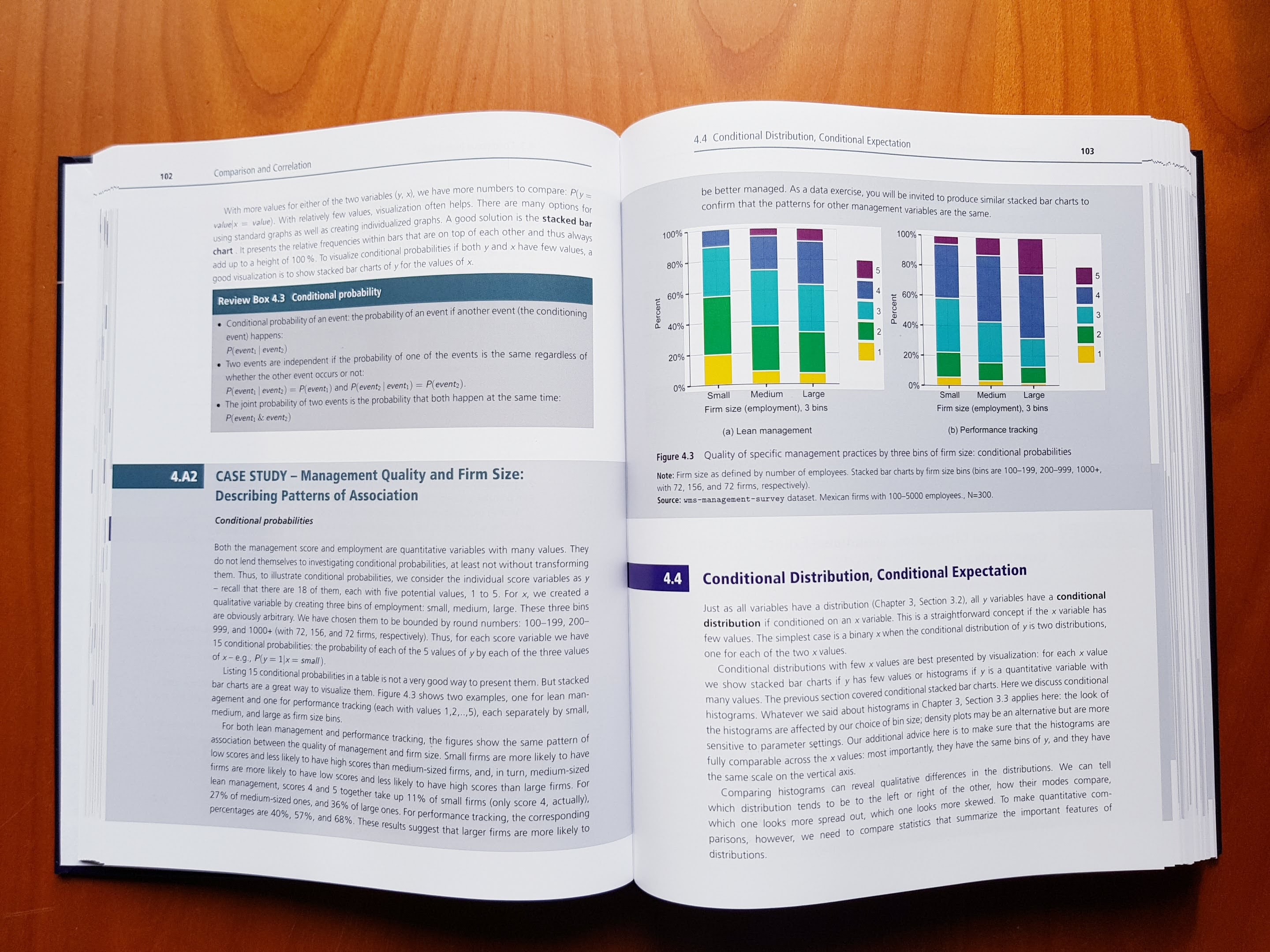Practical teaching advice
Practical advice on what and how teach the textbook in a variety of programs. Q&A style paraphrasing actual questions.
Just started, comments are welcome.

Undegraduate programs
Intro metrics with coding
Q: The cording course looks pretty good to. What’s your take, when should students take the coding course to best complement the lectures based on your book chapter? Before the actual course starts, in a block at the towards the beginning, or on a weekly basis along side the actual course lectures? Also, there is no 1:1 mathcing between coding classes and lectures, any advice there?
A: My practice has been to do the coding part side by side with the book material. You can start it a bit earlier, but it’s better if ‘stakes’ are higher, ie they can immediately see some stuff related to the material they cover. I always do graphics soon including nice colors, etc, because it’s fun…
I don’t know which language you plan to use, but say for coding in R for data analysis, there is a mapping of class 1-11 for the first six chapters. It is sliced in a way that students can do it alone or have an instructor do it. Also hard to have a 1:1 match because of instructor taste. But basically you want basics and data wrangling the in tandem with ch01-ch03, graphs and tables with ch03-04, than maybe more core coding like conditionals + testing for ch05-06. If there is time or you plan to cover it, do simulations, too.
For the second part, you can do stuff that was left out plus all the regression steps, it’s more straightforward.

MA/MSc programs
Graduate program, into metrics (regression), heterogeneity in class
Q: Often graduate economics, political science or business analytics programs start with a first-semester class focusing on regression analysis. Could be called Data Analysis, Introduction to Econometrics, or Quantitative Methods. How shall I pace the material, what to leave out? I expect large heterogeneity in background.
A: Part II of the textbook will serve this course well. Depending on time and background you might want to
- add bits from Chapters 05 and 06, maybe as refresher.
- skip Chapter 12 on time series.
- add bits from Chapter 19 on thinking about causality with observational data.
As a graduate course, it will assume students have some background in statistics. What if this may not be assumed?
- Give them chapters 01-04 of Part 1 as reading with a focus on the nature of data and data types (Ch 02), frequency, probability, distributions (Ch03), and most of Chapter 04. Maybe offer consultations for students in need.
- Cover Ch05 and Ch06, possibly fast. Generalization and basic hypothesis testing are necessary for Part 2.
- You may skip bootstrap (ch05) and final bits of testing (ch06)

Phd
Phd in Management, year long course
I teach the main metrics course in a Phd in management program. Diverse student body, 2 semesters, 12x90mins each, has to cover intro and causality (not prediction). What shall I keep? How to segment into two parts?
I would have three types of material
- Students are expected to know, but maybe some don’t. Here you go fast and offer some help to those who need to pick up. I’d say Ch01-Ch04 make them read the book, focus on case studies.
- Core basics, students might know, but probably not well. Ch05-Ch10/Ch11. Here I would take time, target those below median to make sure everybody understands what happens in a multivariate regression, how to interpret coefficients, think functional form, uncertainty. Take as much time as needed.
- Follow with 19-22 in much detail. This is core causality.
- To do panel, you’ll need time series, so the last bit could be Ch12, 23, 24. Depending on time, you can cut pieces.
- Obviously as it’s management program, you shall focus on case studies with an open attitude, ie discussing options and why certain decisions are made what could be the alternative
- I’d try get them to ch10 in semester 1, maybe not covering some bits. In semester 2, I’d start again with ch10 as review and cover all parts including Under the Hood. Then go from there.